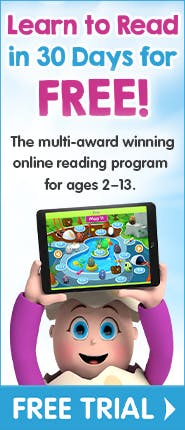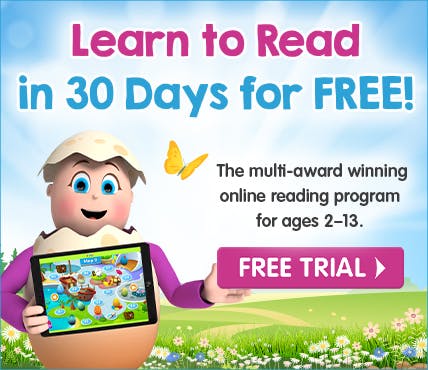


Reading Websites

There is a wide array of resources for teaching kids how to read, and many of them can be found online. From curriculum for teachers, to tips for parents, the Internet seems to have reading covered. But how can you find what’s bona fide when there is so much information vying for your attention? Here are a few things that any reading website worth its salt will have.
Educators have found that reading is most effectively learned when the instruction is given in a structured, programmatic way. However lessons are delivered, whether in the classroom or through reading websites, lessons should build on one another, providing the necessary scaffolding of knowledge that enables kids to begin to work their way through texts, with the goal of reading for meaning and understanding.
While nothing can replace the face-to-face teaching offered by teachers and parents, reading websites can be a wonderful way to supplement other reading instruction. Recent research in literacy (namely the research done by the National Reading Panel, 2000) has found that the most effective literacy programs, including reading websites, cover five key areas of literacy instruction:
phonemic awareness
phonics
fluency
vocabulary
text comprehension.
Phonemic Awareness
Phonemic awareness comprises a number of skills that many kids only come to recognize in a formal teaching setting. Children learn phonemic awareness from such activities as word games, language play, rhymes and other activities that develop their skills with words, syllables and the sounds within words, which are called phonemes. Phonemic awareness skills are best learned within a structured and systematic reading program that links all learning of individual skills to the larger goal of being able to read meaningful texts, including reading texts for meaning.
Reading Eggs uses a variety of phonemic awareness activities that immerse young readers in nursery rhymes, listening skills, sound play and alphabet books. In later lessons, students must listen to two or three words and then choose the one that includes the focus sound of the lesson. This trains students to be keen listeners to all the sounds that make up words. The Reading Eggs program also frames the teaching of phonemic awareness skills in the larger context of a literacy program that has as its goal children reading real books for meaning.
Phonics
Researchers have found that one persistent obstacle to kids learning to read well is the difficulty in understanding of and using the alphabetic principle. The alphabetic principle is the relation between letters and sounds that languages such as English have. Each letter, and some particular groupings of letters are directly related to certain sounds. Kids who are unable to link letters to the sound(s) that they make can have a tough time learning to read. And the teacher who attempts to teach them reading may find that the task is more difficult than usual. Explicit phonics instruction is essential for any program that aims to teach kids how to read fluently in the first few years of school. Such instruction introduces kids to the alphabet and the sounds that letters make in a carefully structured sequence.
Reading Eggs uses a number of activities and lessons that introduce students to letters and the sounds that they make in a structured sequence. Lessons build on one another so that they can use the previously learned letters and sounds in each consecutive lesson. By Lesson 9 in the Reading Eggs program, students are reading their first book. The goal of Reading Eggs is to have kids reading real books; the Reading Eggs storybooks and nonfiction titles are written to provide children with opportunities to practise their letter-sound correspondences and sight words they have been learning by reading extended text.
Fluency
Fluency is the link between the recognition of words and understanding them. The most effective reading programs help students work on fluency skills, so that they can make the link between a word, its sound, and its meaning more quickly. Many skills come together when a reader reads fluently, including familiarity with the words of a text, the understanding of the content, a knowledge of phrasing and context, as well as knowledge of what a fluent reader sounds like.
The Reading Eggs program uses a number of strategies to increase reading fluency. The program models fluent reading of all books, encourages the rereading of a text, and uses a number of activities that increase reading comprehension. Many of the activities within Reading Eggs develop readers’ speed in the reading re-call of an increasing bank of high-frequency sight words; sight word recognition being one of the essential skills needed to become a fluent reader.
Vocabulary
A good vocabulary also helps when kids come to learn to read. The more words that kids know by sound, the more easily they’ll recognize the words on the page when they come to understand the relationship between printed letters and the sounds that they make. Educators have found that the most successful reading programs are able to accommodate students of different vocabulary levels, and also use lots of pictures to help kids learn the meaning of words.
Reading Eggs provides focused literacy skill lessons in the Skills Bank area of the program. This area covers the three core skills of spelling, grammar and vocabulary. Research shows that instruction in these three areas supports reading skills. The Skills Bank vocabulary lessons are carefully designed, offering direct vocabulary instruction for kids. Each lesson presents a group of words around a theme, as it has been found that teaching new words within a category of similar objects or themes is a great way for kids to learn (and remember) new words.
Comprehension
Reading Comprehension has come to be seen as the essence of reading. After all, reading can seem pointless if you can’t understand what you read. There are a number of strategies that are helpful for readers to learn in order to assess how much of a text they understand, and at what level of the text they are understanding things, whether it is the sentence level, the text level or the story level. These strategies include: monitoring comprehension, ask and answer questions, use of graphic organizers of text and recognition of story structure.
The Reading Eggs reading software uses all of the comprehension strategies listed above to help students both develop and be able to assess their reading comprehension.
The Reading Eggs Reading Software provides a comprehensive online reading program that teaches kids to read as well as supplement instruction they receive in school and at home. It systematically covers all of the key literacy areas of instruction in its lessons, in order to teach kids how to be fluent readers and understand what they read.
Testimonials
My child LOVES Reading Eggs! This program has been exactly what I’ve been looking for. We tried two other popular reading programs and while they were fun, they just didn’t translate to my child becoming a reader. He’s a reluctant reader, capable but frustrates easily. With Reading Eggs I have never witnessed an ounce of frustration, just watched my son having fun. And even better—I’ve watched him start to read in such a natural progression—that is a beautiful thing to watch. Thank you Reading Eggs!
- C. Bryant
Reading Eggs is a comprehensive, well-integrated program, which I have found to be of great help in developing children’s skills and interest in reading. Even the senior students wanted to have a go!
- Lynne Brehaut, Nungurner Primary


